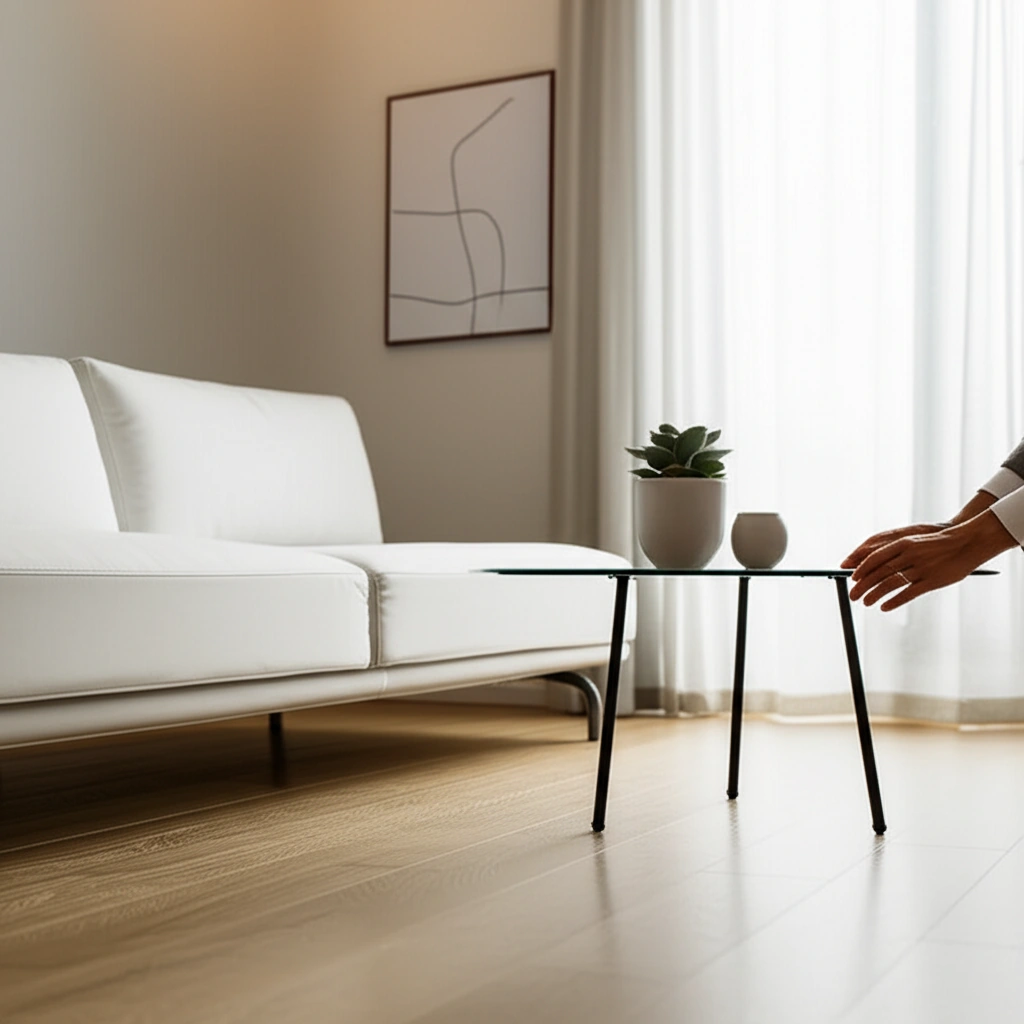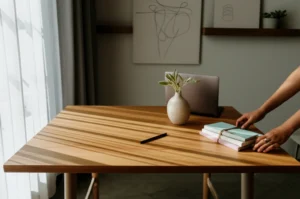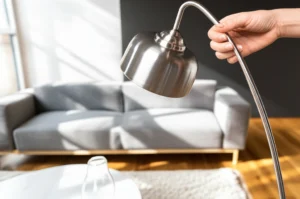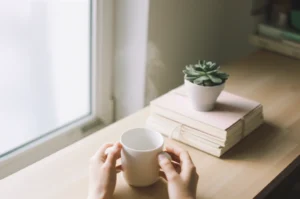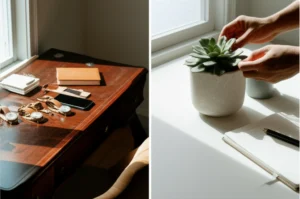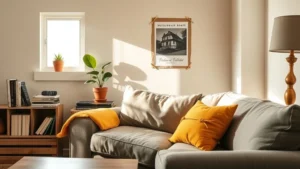Ever walked into a room and just felt a big, contented sigh escape your chest? Like… yeah, finally, a space that lets you breathe? That’s the gift of minimalist home design. It’s not about stripping away every ounce of personality or living in a blank, cold space. Nope. It’s about crafting a home that works for you, not against you—a home that feels easy, comfortable, and genuinely yours.
I’ve been down the chaotic, cluttered path (who hasn’t?). There were years where every shelf overflowed, every closet was a tangled mess of “stuff I might need.” Honestly, it can get overwhelming. But once you take the leap toward minimalism, it’s a bit like finally learning to swim after years of wading in the shallow end. Suddenly, home is a place to relax, restore, and… just be.
Why Embrace Minimalism?
Let me be real: minimalist home design isn’t just about Instagram-perfect, white-walled rooms. It’s about clearing space—for your eyes, for your mind, for your life. So, why even bother with this trend? Is it just for people who already have it all together? Absolutely not. If you’re craving some calm, some breathing room, you’re right where you should be.
Let’s get into the nitty-gritty and look at why people like us make the switch:
- Simplicity feels good. Fewer things mean fewer distractions. Science even says it: clutter causes stress, and a cleaner space lowers anxiety. It’s proof that minimalism isn’t just an aesthetic—it’s a kindness to your mind.
- Easy cleaning, happy living. You know the struggle of dusting around a million trinkets or wrestling with clutter to find your keys? Minimalism makes upkeep lighter, freeing up your weekends for the stuff you actually love.
- Quality wins. Minimalism nudges you to buy less—but better. Over time, that can save money and seriously up your style game.
- It’s adaptable to you. Whether you love the paired-down, all-white “gallery” look or you’re more into cozy neutrals dotted with textures, minimalism fits.
A Balanced Reality Check
I’d be lying if I said minimalist home design doesn’t have its quirks. Sometimes, the pursuit of “less” can feel like a tightrope. Too much reduction and the house goes from airy to… impersonal. On the flipside, keeping too much “just in case” chips away at that beautiful simplicity you were craving in the first place.
Here’s where the real magic happens: It’s finding your balance. Maybe you keep your favorite bold painting as a focal point or let a joyful plant steal the show. Minimalism that still feels like you—now that’s a win.
Principles For A Minimalist Home
Ready to roll up your sleeves? This isn’t about tossing everything you own overnight. Let’s break down the “how” with a few guiding principles!
- Function comes first. Everything in your home should earn its keep. Multi-use furniture (hi, storage ottoman!) and essentials-only layouts make spaces feel open and purposeful. For inspiration, peek at minimalist house interior—it’ll get your gears turning.
- Color: the art of less. Start with a simple, neutral palette—think soft whites, gentle taupes, greiges that play nice with sunlight. If neutrals make you yawn, sneak in one accent color (sage green, navy, terracotta). This makes a room feel calm, not cold.
- Let in the light. Maximize sunshine with pared-down window treatments, mirrors that bounce brightness across the room, and open paths for light to travel.
- Add warmth with texture. Wood, linen, stone, woven baskets—they’re the unsung heroes that keep a minimalist home feeling lived-in, not lifeless. You get the simplicity plus the comfort. It’s like a cup of tea on a cool morning—unfussy and just right.
- Edit, don’t erase, your decor. Choose one or two statement pieces over lots of little bits. Go ahead, let your favorite print or a sculptural lamp have the stage. Resist the urge to over-accessorize. Remember: it’s quality, not quantity.
Room-By-Room Realism
Every home (and human) is different. But here are some starter ideas for minimalist home design that you can adapt to your lifestyle:
Living Spaces
The living room should be a retreat, not an obstacle course. Pick a few essential pieces—a comfy sofa, one or two chairs, a simple coffee table, maybe a bookshelf if that’s your vibe. Emphasize sleek lines and leave plenty of negative space. Add texture with a cozy rug or a tactile pillow, not a pile of knickknacks. Want to see minimalist living in real homes? Check out these minimalist living examples for ideas you can actually use.
Kitchen
Countertops: keep them clear. (Can we all agree to stop letting mail pile up here?) Only display what you use often—a gorgeous wood cutting board, a favorite mug, maybe a small plant for a bit of green. Use cabinets and drawers for the rest, and if you don’t use it weekly, consider letting it go.
Bedroom
Think sanctuary, not storage unit. The essentials: bed, two nightstands (optional), maybe a dresser. For bonus points, limit your closet to clothes that truly fit and flatter—hello, stress-free mornings. Soft, neutral bedding and blackout curtains can help create a haven for rest.
Bathroom
Banish the countertop chaos. Store daily items in drawers or baskets. Limit the out-in-the-open bottles to one or two essentials—this isn’t a hotel, but it can feel just as relaxing!
Multipurpose Spaces
If your office is also your guest room or part of your living space, don’t panic. A small, sturdy desk and clever cable management can create a clutter-free nook. Use vertical organizers or sleek baskets to hide the bits you need nearby.
A Practical Minimalist Home Checklist
So, where to start when the clutter feels like it has a grip on you? One word: lists. And no, you don’t have to be naturally organized! Try a minimalist home checklist to break things down into manageable steps. It feels way less daunting, I promise.
Here’s a mini blueprint to get rolling:
- Declutter in sections: Tackle one room (or even one zone of a room) at a time. Handle every object and ask: “Do I use this weekly? Do I love it? Would I miss it if it were gone?”
- Embrace the “one in, one out” rule: For every new thing, let another go.
- Schedule small clean-outs: A little every week keeps the clutter from returning.
- Storage is your friend (to a point): Choose bins or baskets that fit your actual needs—no more, no less.
If you’re the checklist type (who isn’t after a few wins?), you’ll love the sense of progress. And if you want a truly practical roadmap, don’t miss this becoming a minimalist checklist for daily micro-tasks—perfect for turning intention into real-life results without the overwhelm.
Getting Started: “How To Become A Minimalist In 30 Days”
Okay, this isn’t a competition. But a 30-day challenge is a fantastic way to build lasting habits. Each day, pick a tiny task: clear one drawer, donate three things, say goodbye to a tired decor item. The power of little changes adds up fast—and you might even have fun. If you’re skeptical, think of it like learning a language: start simple, practice a little daily, and soon you’ll find yourself “speaking” minimalism without effort.
Decorating With Heart: Minimalist Home Decor Living Room Tips
Can a minimalist room still feel warm and inviting? Absolutely—it all comes down to intention, texture, and a sense of balance. Consider layering a neutral rug over a wood floor, adding a couple of textured pillows to the sofa, and using accent lighting (like a slim floor lamp or lantern).
Maybe you spotted a gorgeous vase or a piece of art that sparks joy. Let it stand out by giving it space—don’t crowd it! And if you’re itching for inspiration on mixing warmth and minimalism, you’re not alone. There’s a whole world of “warm minimalism” out there, blending Japanese serenity, Scandinavian functionality, and your own personality.
Budget, Sustainability, And Smarter Choices
One gentle secret about minimalist home design: It doesn’t have to break the bank. In fact, over time, you’ll spend less because you’ll own less. Instead of replacing cheap things over and over, you invest in quality once. Bonus: shopping less means less waste, which is a win for the planet and your wallet.
That’s why so many minimalists fall in love with thrift stores, vintage finds, and hand-me-downs. Quality over “fast fashion” furniture, always. If you’re wondering where to start, just ask yourself: “Does this add lasting value to my life?”
Stories, Stumbles And Wins: The Real Minimalist Life
It’s easy to scroll through Pinterest-perfect homes and think, “I could never pull that off.” Truth is, every journey looks a little different. I started with one shelf—decluttered it, dusted it, let it breathe. That single shelf felt so much better that, yeah, I kept going. Friends and family noticed, and before I knew it, “less stuff” didn’t just look good, it felt good. And I’m still figuring it out. Minimalism isn’t a finish line, it’s just… a friendlier way to live.
If you need a confidence boost, swing by this treasure trove of minimalist living examples. Real people, real homes—proving that comfort and minimalism absolutely go together.
Wrap-Up: Making Space For What Matters
Minimalist home design welcomes you to shed what’s not serving you—physically, mentally, emotionally. It isn’t about following strict rules or achieving a magazine spread. It’s about creating a space that breathes with you, calms your mind, and makes everyday living—yes, even chores!—a little lighter.
So, where do you begin? Start with one small spot. Or try out a checklist, or even just open the windows for a fresh perspective. Minimalism is personal, flexible, and, ultimately, yours. If you’ve got questions or want to share your wins and stumbles, I’m cheering you on. Here’s to homes that feel like a sigh of relief—homes that make room for you, not just your stuff.

